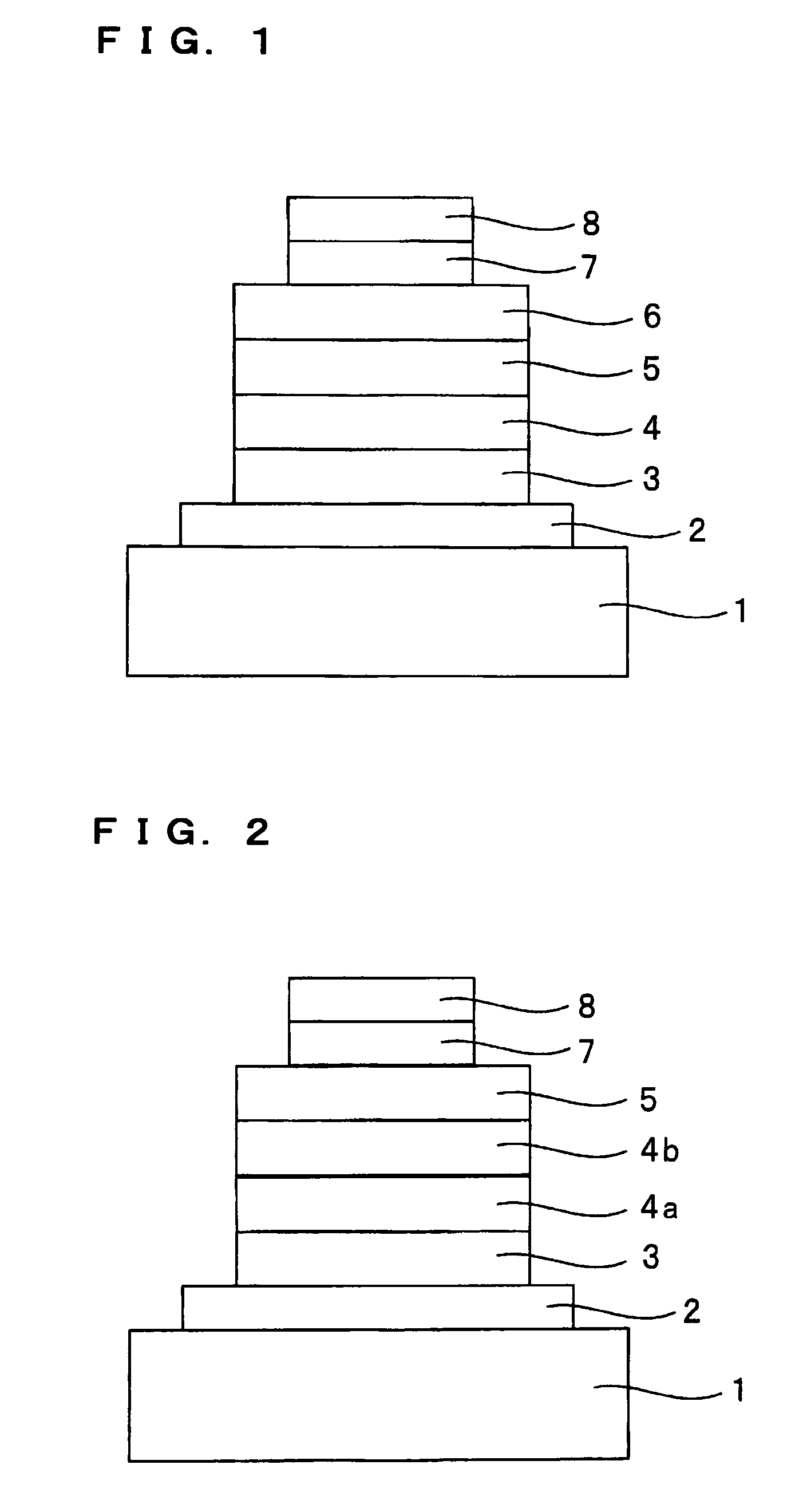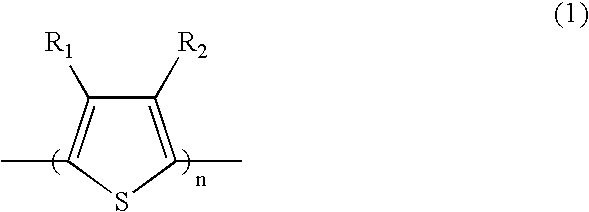Hole transport material for organic electroluminescence devices and organic electroluminescence device using the same
a technology of electroluminescence devices and transport materials, which is applied in the direction of solid-state devices, discharge tubes/lamp details, natural mineral layered products, etc., can solve the problems of inadequate improvement of carrier injection barrier at interface, inadequate driving voltage of devices, and insufficient carrier mobility of hole transport materials, etc., to achieve excellent hole transporting properties, improve hole mobility, and improve the effect of transporting properties
- Summary
- Abstract
- Description
- Claims
- Application Information
AI Technical Summary
Benefits of technology
Problems solved by technology
Method used
Image
Examples
experiment 1
[Experiment 1]
[0077] In Examples 1 to 7 and Comparative Example 1, each organic EL device having a structure shown in FIG. 2 was prepared in the following manner.
example 1
[0078] A copolymer PF8-tBuTPD-Th according to the present invention was synthesized by following the procedure described below.
[0079] A reaction apparatus equipped with a stirrer was dried well and connected to a nitrogen line / a vacuum line. Into this reactor were charged 48.4 mg (0.2 mmol) of 2,5-dibromothiophene, 227.4 mg (0.3 mmol) of N,N′-bis(4-bromophenyl)-N,N′-bis(4-tert-butylphenyl)-benzidine, 321 mg (0.5 mmol) of 9,9-dioctylfluorene-2,7-bis(4,4,5,5-tetramethyl-1,3,2-dioxaborolan), a catalyst for Suzuki coupling reaction, 5 ml of toluene and 8 ml of a basic aqueous solution. After plugging an opening of the reactor with a rubber stopper, by repeating short-time evacuation and N2 purge three times, air in the reactor was replaced with nitrogen gas and a solvent was degassed. Then, the reactor was heated to 90° C. and a reaction was continued for about 3 hours in an atmosphere of nitrogen while keeping the reactor at 90° C. Then, 61 mg (0.5 mmol) of phenylboronic acid was adde...
example 2
[0084] An organic EL device was prepared by following the same procedure as in Example 1 except for providing a second hole transport layer 4b consisting of NPB having a film thickness of 30 nm on a first hole transport layer 4a and providing an emission layer 5 on the second hole transport layer 4b.
PUM
| Property | Measurement | Unit |
|---|---|---|
| emission luminance | aaaaa | aaaaa |
| peak wavelength | aaaaa | aaaaa |
| peak wavelength | aaaaa | aaaaa |
Abstract
Description
Claims
Application Information
 Login to View More
Login to View More - R&D
- Intellectual Property
- Life Sciences
- Materials
- Tech Scout
- Unparalleled Data Quality
- Higher Quality Content
- 60% Fewer Hallucinations
Browse by: Latest US Patents, China's latest patents, Technical Efficacy Thesaurus, Application Domain, Technology Topic, Popular Technical Reports.
© 2025 PatSnap. All rights reserved.Legal|Privacy policy|Modern Slavery Act Transparency Statement|Sitemap|About US| Contact US: help@patsnap.com



